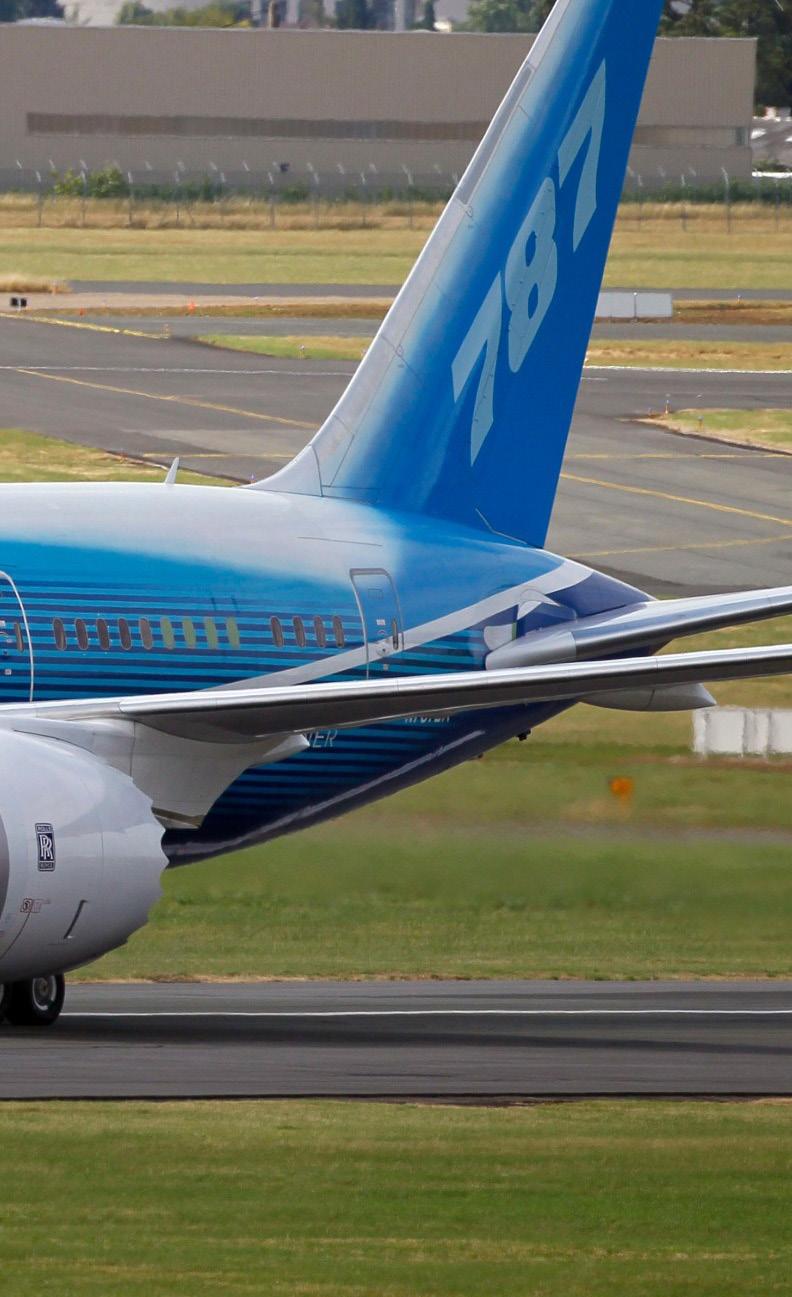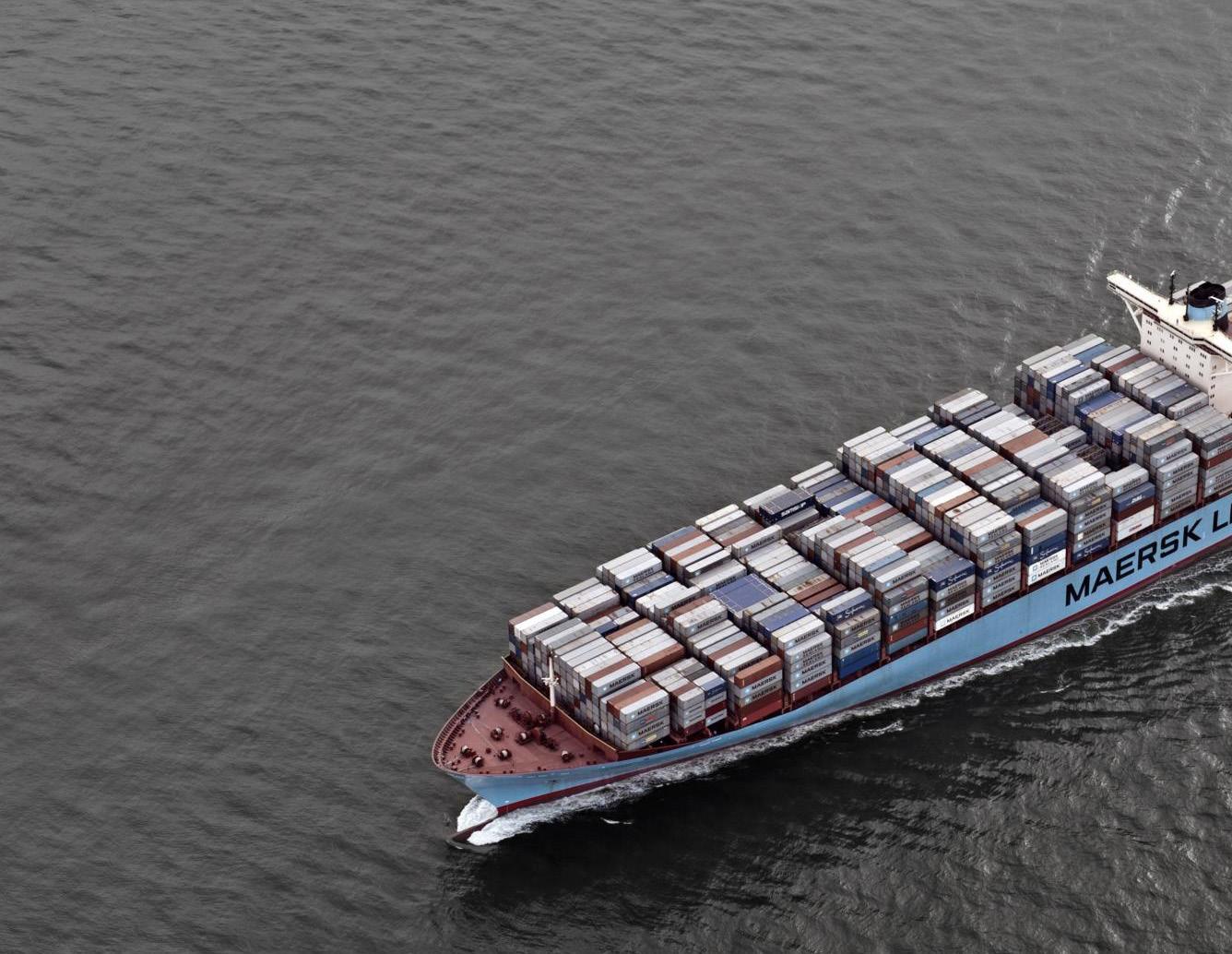
4 minute read
Boeing forecasts demand for 1,025 new airplanes in Africa
Boeing projects that intra-African passenger traffic will more than quadruple in the next twenty years, placing the continent’s growth among the highest globally. To support this, 1,025 new airplanes will be needed over the next two decades.
Overall African air traffic growth is forecast at 7.4%, the third highest among global regions and above the global average growth of 6.1%. Boeing included the data as part of its 2023 Commercial Market Outlook (CMO), the company’s long-term assessment of global demand for commercial airplanes and services.
Advertisement
“African carriers are well-positioned to support intra-regional traffic growth and capture market share by offering services that efficiently connect passengers and enable commerce within the continent,” said Randy Heisey, Boeing managing director of Commercial Marketing for Middle East and Africa. “We forecast an increase in the average aircraft size and seats per aircraft for the African fleet, as single aisles, like the Boeing 737 MAX, will be the most in demand for the continent.”
African aviation traffic has recovered at a strong pace in 2023 led by pent-up demand and economic growth driven by higher global commodity prices. African airline flights are currently 8% above pre-pandemic levels. Africa’s above global average, long-term annual economic growth of 3.4%, combined with increasing rates of urbanization and a growing middle-class population, will continue to drive Africa’s long-term traffic demand, according to Boeing. Economic and growth Initiatives such as the African Continental Free Trade Area and Single African Air Transport Market are expected to further stimulate trade and intra-regional connectivity.
The 2023 Africa CMO also includes these projections through 2042:
With Europe remaining the most prominent origin/destination for travelers to and from Africa, airlines in the region will grow their fleets by 4.5% per year to accommo- date passenger traffic growth.
Single aisle jets are expected to account for more than 70% of commercial deliveries, with 730 new planes mainly supporting domestic and intra-regional demand. In addition, African carriers are estimated to need 275 new widebodies, including passenger and cargo models, to support long-haul routes and air freight growth.
Approximately 90% of African jet deliveries are expected to serve fleet growth with more fuel-efficient models such as the 737 MAX, 777X and 787 Dreamliner, with nearly one in five deliveries replacing older airplanes.

Estimated demand for aviation personnel will rise to 69,000 new professionals, including 21,000 pilots, 22,000 technicians and 26,000 cabin crew members.
Commercial services opportunities such as supply chain, manufacturing, repair and overhaul are valued at $105 billion.
Air transport industry turns to digitalization to boost baggage management

Airlines and airports are facing a surge in baggage mishandling rates amidst the growing number of passengers, with the number of mishandled bags almost doubling from 2021 to 2022 to 7.6 bags per thousand passengers, according to SITA’s 2023 Baggage IT Insights report released today.
The shortage of skilled staff, resumption of international travel, and congestion at airports has made it challenging to manage bags and ensure their smooth handling at airports – particularly during peak travel periods. The overall increase in mishandling is forcing the industry to focus on digitalization and automation, with technology investments that deliver greater automation and self-service being a top priority.
Delayed bags accounted for 80% of all mishandled bags in 2022, lost and stolen bags increased to 7%, and damaged and pilfered bags decreased to 13%.
The surge in the mishandling rate comes after more than a decade of reduction in mishandled baggage. Significant process improvements helped the mishandling rate per thousand passengers fall by 59.7% between 2007 and 2021. However, given the pressure of staff shortages on operations post-COVID, the 2022 mishandling rate of 7.6 bags per thousand passengers represents a 75% increase from 2021.
Transfer bags have historically accounted for the majority of mishandled bags. This was no different in 2022, with a one-percentage point increase from 2021, pushing the proportion of bags delayed at transfer to 42%.
This increase is attributed to the resurgence of international and long-haul travel, leading to loading errors and greater transfer mishandling rates. The failure to load bags accounted for 18% of all mishandled bags in 2022, representing a 3% decrease from the previous year. Loading errors more than doubled compared to the previous year, accounting for 9% of all delayed bags in 2022, stemming from operational strains on baggage systems.
David Lavorel, CEO, SITA said: “After a decade where the mishandling rate more than halved between 2007 and 2021, it is disheartening to see this rate climbing again. As an industry, we need to work hard to ensure passengers are once again confident to check in their bags. We at SITA are working directly with airlines and airports to help solve key pain points in the baggage journey through smart automation, tracking, and digital platforms.”
Investing in real-time baggage status information has become a key priority for airlines, with 57% of airlines providing their staff with mobile access to real-time baggage status information. This figure is expected to increase significantly to 84% by 2025, and 67% of airlines plan to offer realtime baggage status information directly to passengers, marking a substantial improvement from 25% today.

SITA has developed the WorldTracer Auto Reflight system in direct response to the high mishandling rates observed at transfer. This solution automatically identifies bags what are not likely to make their planned connecting flight and rebooks them on the next possible flight using the existing bag tag – all while keeping the passenger informed.
SITA estimates that automation of reflight operations could save the industry up to $30 million per year. Lufthansa and SITA’s recent partnership using the technology aims to digitalize the manual reflight process, and the results of their Proof of Concept suggest that they can automatically reflight as much as 70% of Lufthansa’s mishandled bags at Munich Airport.
A.P. Moller – Maersk (Maersk), the global integrated logistics company, has opened its doors to a brand-new and technology-driven Warehousing & Distribution (W&D) facility in Douala, Cameroon. Situated within the Douala Port Zone, Maersk’s new facility is the ideal site for cargo moving in and out of one of the most important ports in the country along the West African coast, one that also serves as a gateway to several markets within Central Africa.
With the rapid expansion of the middleclass population in the region, there is a growing demand for goods, especially in
Maersk unveils technology-driven warehouse in Cameroon
the FMCG sector. The Port of Douala plays a crucial role in meeting this demand, as it handles over 70% of imports into Cameroon, serving both the nation’s population and its landlocked neighbours within the Central African Economic and Monetary Community. The conversations with our customers have revealed a gap between the demand and supply for modern Warehouse & Distribution (W&D) facilities that can provide the additional capacity needed in this market. As a response, we have decided to invest in a technology-driven Warehouse Management System (WMS) facility. This strategic move not only bridges the demand-supply gap, but also offers our customers a cost-











